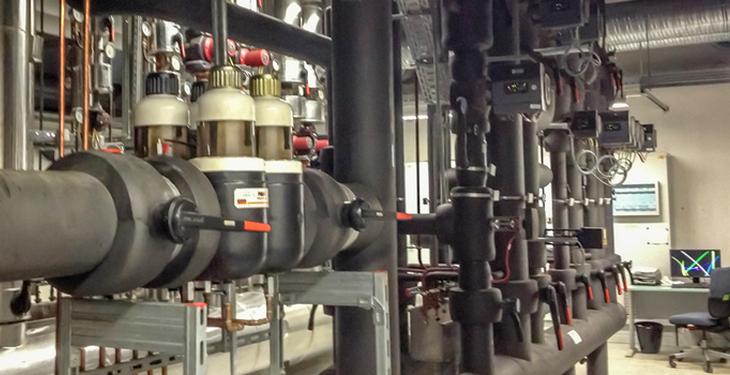The draft law amending Law No. 325/2006 on the Public Service of Heating Supply was initiated in March 2008 and was adopted by the Senate as a preliminary chamber in September the same year. Almost 10 years later, the project, launched by the, then and now, Chairman of the Committee for Industries and Services, Iulian Iancu, was adopted on July 10; it will change the functioning of centralized heating systems in many ways.
Many measures are simple formal legislative updates that take into account the changes in the architecture of the heating system regulation in the last decade; for example, the new form of law takes into account the fact that ANRE – the National Energy Regulatory Authority took over certain tasks previously attributable to ANRSC – the National Regulatory Authority for Community Utilities Services, as a result of a law adopted in 2016. Since then, ANRE has insisted that the legislation does not ensure the conditions for it to be able to exercise the powers of the competent authority for the public service of thermal energy supply, namely the licensing, regulation and control of the production, transport, distribution and supply of thermal energy, with the exception of the production of heat in cogeneration. Among other things, the law in 2016 transferred to ANRE powers and competences, but not the specialized personnel related to their achievement, wrote www.investenergy.ro, in December 2016.
Another change in this line is that wind energy is introduced among renewable primary sources of heating (Article 22 of the Law).
Yet another category of changes consists of those introduced with the intent to boost the heating sector and to improve the context of operations.
New cogeneration support scheme for the time frame 2020-2029
The new law provides that “by December 31, 2018, the Government approves the support scheme for the promotion of high efficiency cogeneration, valid for 2020-2029, to be drafted by the Ministry of Energy.” The measure is considered by experts in the sector as indispensable for the construction of new production units, irrespective of the type of primary resource used. At the conference “The Power of Cogeneration – Subsidies, Technologies, Business Models”, organized by energynomics.ro on June 21, MET România Energy and CIS GAZ talked about some projects for the execution of some cogeneration plants, to capitalize also on the natural gas expected to enter the market with the start of the offshore exploitations at the Black Sea.
Concession opportunities
Article 2 clearly states that “public service of central heating may be carried out, in whole or in part, by private operators, through concession, public-private partnership or in any other form prescribed by law”. The provision allows for private investment in new production capacities in contractual terms compatible with business plans tested in the private environment and possibly fundable not only by European funds or own contributions but also through bank loans.
Public service, banned primary heating cut in the cold season
As a protection measure, the law also expressly states that “it is forbidden to cease the supply of primary heat during the cold season, defined in accordance with the legal provisions, by the producers and / or suppliers of primary thermal energy, as well as the cessation of the primary energy supply of them by primary energy producers / suppliers”.
In Article 5 (terms and definitions), point 13 introduces the concept of a framework supply contract for thermal energy, point 20 discards the idea of a local price for each supplier, and point 31 expands the content of the cost sharing systems, by replacing the word “heat distributor” with the formula “technical systems for determining individual heat consumption”. There is also a clarification of the unitary heating area concept (paragraph 37), and 10 new definitions are introduced as well.
Easier to disconnect, if you are allowed!
A clarification from Article 30 implies that disconnections from municipal district heating systems will only be allowed for block of flats or apartments outside off the unitary heating areas designated as such by the mayoralties. For such cases, the new procedure eliminates the obligation to obtain “the agreement of the neighbors of the apartment, both horizontally and vertically”, which appeared in the old form of the law.
However, the main expected impact is that the pace of disconnections from centralized heat supply systems (SACET) could be substantially reduced. The measure is to ensure as far as possible a sufficient number of beneficiaries to justify the SACET’s economic activity, while arguments such as operational safety and reduced environmental impact are also put on the table.
“The district heating system is, according to the experts, the most efficient system for providing hot water and heating for city residents both in terms of efficient heat production at a lower price and in terms of risk explosion or asphyxiation that, in this situation, do not exist”, said Claudiu Crețu, Special Administrator ELCEN, in a Facebook post. “There is a need for more measures, including the identification, delimitation and establishment of unitary heating zones, which is also a prerequisite in creation of technical and economic conditions for accessing the European funds for the realization of other urgent investments for the rehabilitation of the district heating system, added Claudiu Crețu.
VAT of 5% for heat supplied to the population
Finally, in another gesture to stimulate investment in the thermal energy sector, value added tax (VAT) on the heat supplied to the population (hot water and heat supplied in a centralized system) was reduced from the current 19% to 5%, with application from next year.
